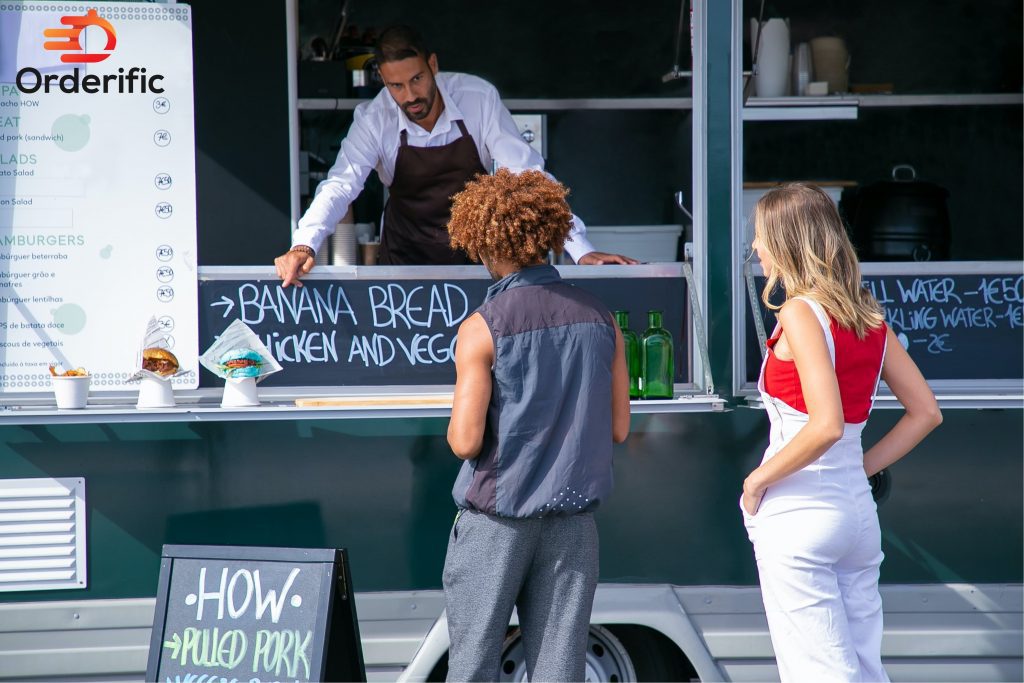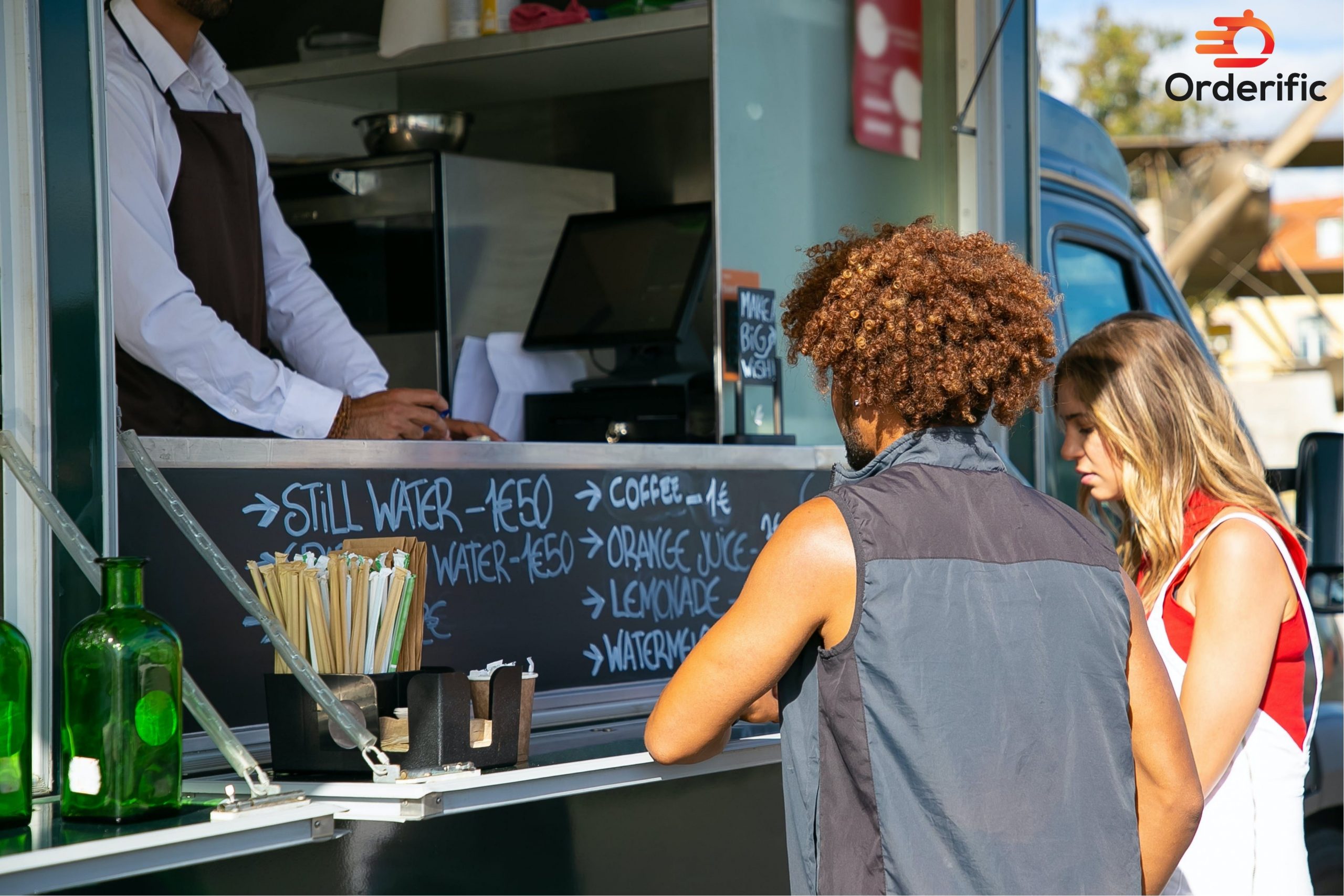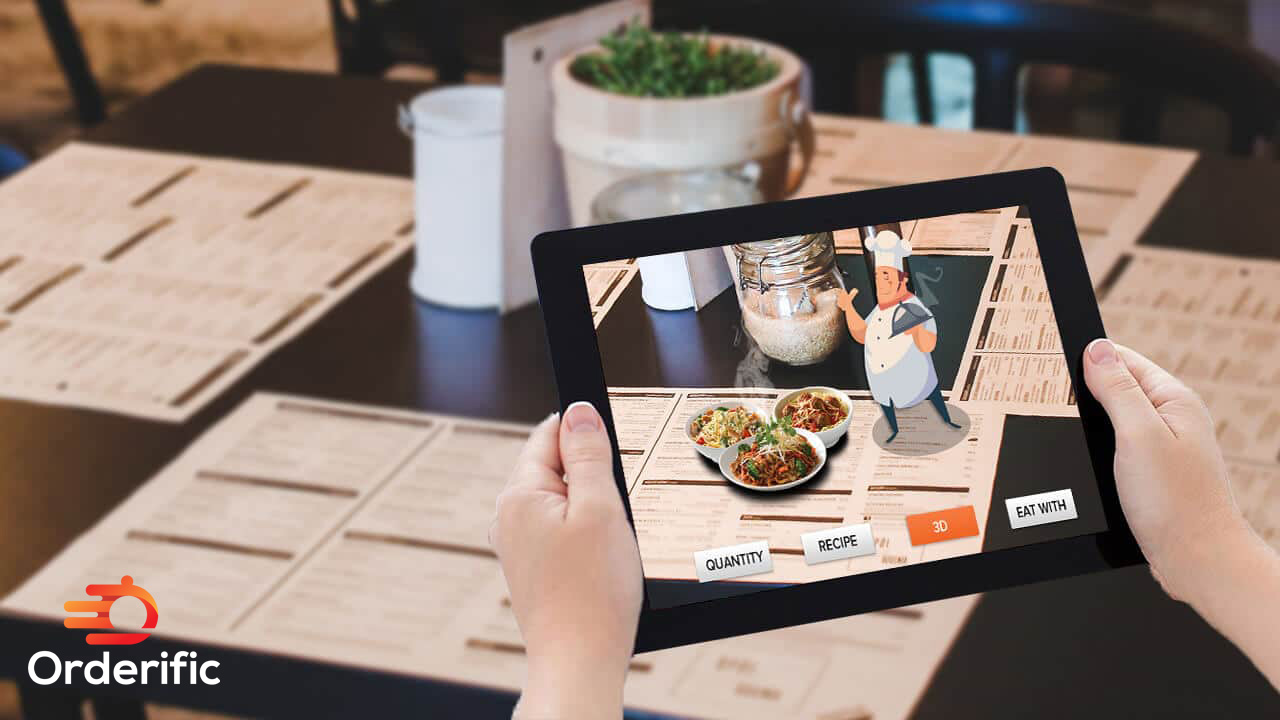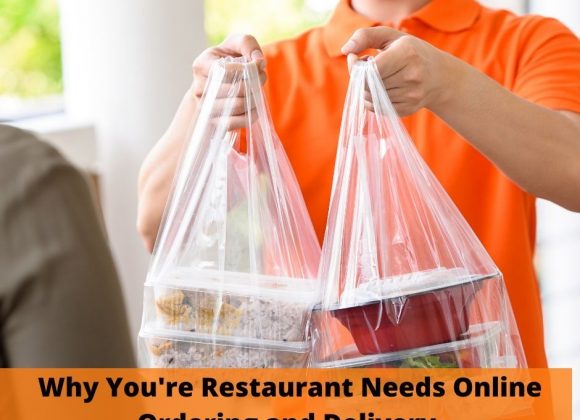Introduction
Running a food truck business is more than just serving up delicious food. It’s about Route planning, food truck location, and crowd density, particularly regarding route planning. This is crucial for food trucks, as the proper route can significantly impact customer satisfaction and overall business success. Effective route planning considers various factors such as customer density, parking availability, traffic conditions, and city regulations and permits. It ensures prompt food delivery operations, enhances customer experience, and balances costs. Food truck management software, including a POS system, can streamline the planning process. This software allows you to easily manage inventory, process payments, and analyze data for insights. Thus, route planning is not just about transit; it’s about ensuring that your food truck is at the right place and time and serving the right customers.
Why Is Route Planning Important for Food Trucks?

Route planning for food trucks is a highly strategic endeavor beyond mere road selection. It entails meticulously evaluating various factors, such as customer populations, available parking options, traffic patterns, and local regulations. Food truck operators can ensure timely delivery and efficient operations by considering these aspects. It’s not just about mobility; it’s about strategically positioning your food truck to maximize success.
To further streamline this process, leveraging food truck management software, including a robust POS system, can significantly enhance efficiency. This software can aid in inventory management, seamless payment processing, and comprehensive data analysis, providing valuable insights to optimize operations further and drive success in the highly competitive food truck industry.
What Is a Delivery Route Optimization System?
A Delivery Route Optimization System is a cutting-edge and innovative tool that harnesses advanced algorithms and state-of-the-art GPS technology to determine the most efficient routes for food trucks. This intelligent system considers many parameters, including real-time traffic conditions, optimal distance between stops, and even operational hours, thereby ensuring the minimization of travel time and fuel consumption to the utmost extent possible. By seamlessly integrating and implementing such a sophisticated system, food truck operators can significantly enhance customer satisfaction with prompt and timely deliveries and substantially boost their profits by curbing and reducing operational costs to a great extent. With this powerful tool, food truck businesses can revolutionize their operations and establish themselves as industry leaders, setting new benchmarks for excellence and efficiency.
Best Practices for Delivery Route Optimization
Invest in the Right Tools
Investing in the right tools, such as comprehensive food truck management software, is vital for effective route planning. This software helps map the most efficient routes but also assists in managing inventory, processing payments, and analyzing data for business-enhancing insights. Leveraging such tools can significantly boost customer satisfaction and profitability by ensuring timely deliveries and reducing operational costs.
Develop A Comprehensive Plan
Developing a comprehensive route plan requires a thorough understanding of your customer base, peak sales times, and the most effective routes to reach them. It involves strategic selection of stops, factoring in traffic patterns, parking availability, and local regulations. An effective plan minimizes travel time and maximizes customer interactions, enhancing customer satisfaction and increased profitability.
Automate And Standardize
Automation and standardization are key to optimizing delivery routes effectively. By automating route planning with advanced software, you can ensure consistency, reduce human error, and free up time for other important business tasks. Standardizing routes also leads to predictability, allowing customers to know when to expect your food truck.
Set Up The Right Metrics
Setting up the right metrics is essential for assessing the effectiveness of your delivery route optimization. Key performance indicators might include accuracy of delivery time, fuel efficiency, and customer satisfaction. Regularly tracking these metrics helps identify gaps and make necessary adjustments to improve performance and profitability.
Empower Your Drivers
Empowering your drivers is an integral part of optimizing delivery routes. Equip them with the necessary tools and training to effectively understand and adapt to route changes. Their on-ground experience can provide valuable insights to improve route planning further, leading to increased efficiency, customer satisfaction, and profitability.
Manage Your Customers
Managing your customers effectively is critical to running a successful food truck business. Stay attuned to their preferences, peak dining times, and regularly frequented locations. This information can greatly influence your route planning and optimization strategies, ensuring you’re always where your customers need you to be.
Benefits of Using Software for Routing and Scheduling
Automated Planning
Automated planning is one of the notable benefits of using routing and scheduling software. This technology eliminates the tedious task of manual planning, dramatically reducing human error and enhancing efficiency. By automating route planning, food truck businesses can ensure optimal routes, leading to timely deliveries, efficient operations, and, ultimately, satisfied customers.
Real-Time Visibility and Responses
Real-time visibility and response capabilities are another significant advantage of routing and scheduling software. This feature allows food truck operators to monitor their fleets in real time and make immediate decisions based on unexpected changes in traffic, weather, or customer orders. The ability to respond quickly to such changes ensures efficient operations and enhances customer satisfaction.
Efficient Output
Routing and scheduling software significantly enhances operational efficiency by determining the most effective routes and schedules. This results in maximized productivity, minimized fuel consumption, and improved service levels, fostering a more profitable and customer-centric food truck business.
Enhanced Customer Experience
Enhanced customer experience is a key advantage of using routing and scheduling software. The software ensures timely deliveries and promotes predictability, allowing customers to know when and where to expect your food truck. This leads to improved customer satisfaction, fostering loyalty and repeat business.
Conclusion
In conclusion, Route planning, food truck location, and crowd density are critical aspects of the food truck business that contribute significantly to operational efficiency, customer satisfaction, and overall profitability. By leveraging the power of food truck management software and a Delivery Route Optimization System, you can automate planning, gain real-time visibility, enhance operational output, and ultimately provide a superior customer experience. Moreover, the valuable insights garnered from comprehensive route planning can empower your drivers and help you manage your customers more effectively. Interested in optimizing your food truck route planning? Contact Orderific today to book a demo and discover how our software can revolutionize your mobile eatery’s success.
FAQs
What is route optimization software?
Route optimization software is a tool that uses algorithms to find the most efficient travel routes.
How to optimize delivery routes?
Optimize delivery routes by using software to plan efficient paths, considering factors like traffic, distance, and customer locations.
What tools and strategies can food truck operators use for efficient route planning?
Food truck operators can use route optimization software and strategic planning for efficient route planning.
How can route planning improve the customer experience?
Route planning can improve customer experience by ensuring timely deliveries and predictable service.













